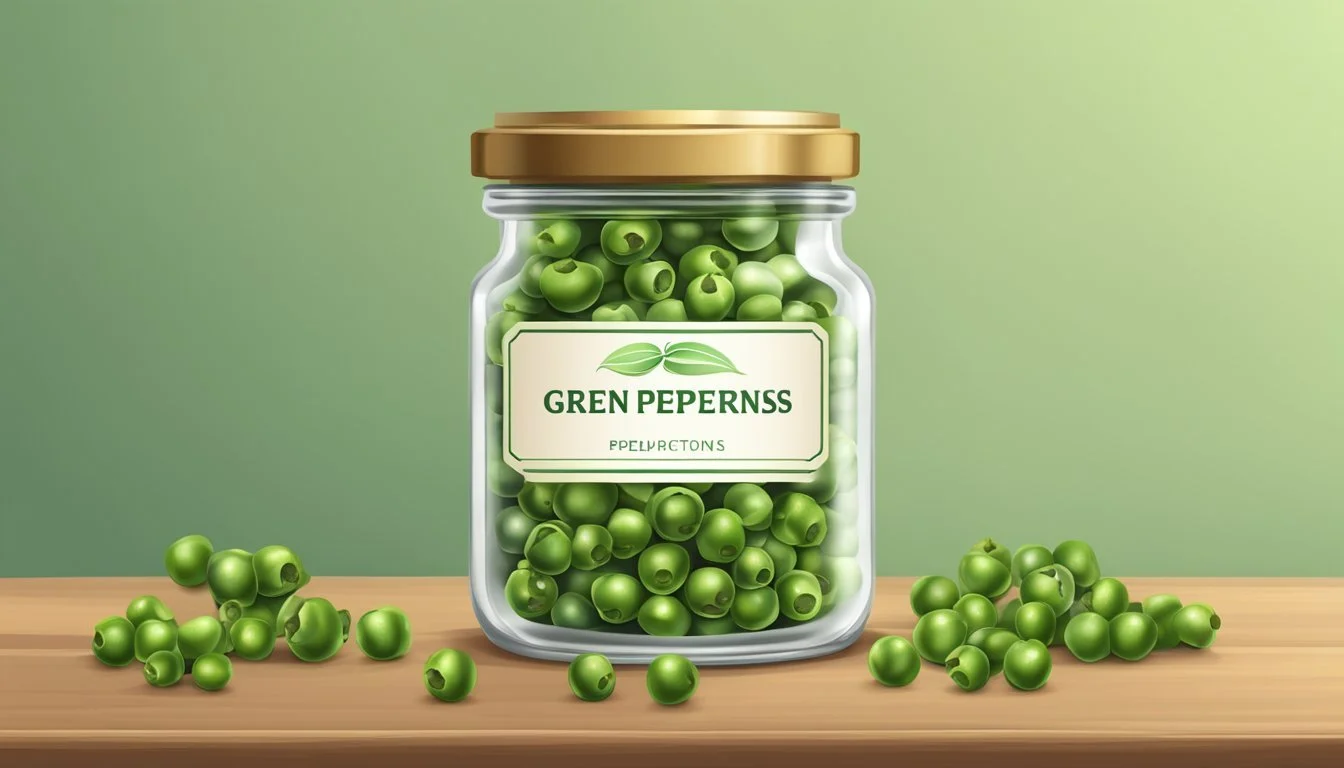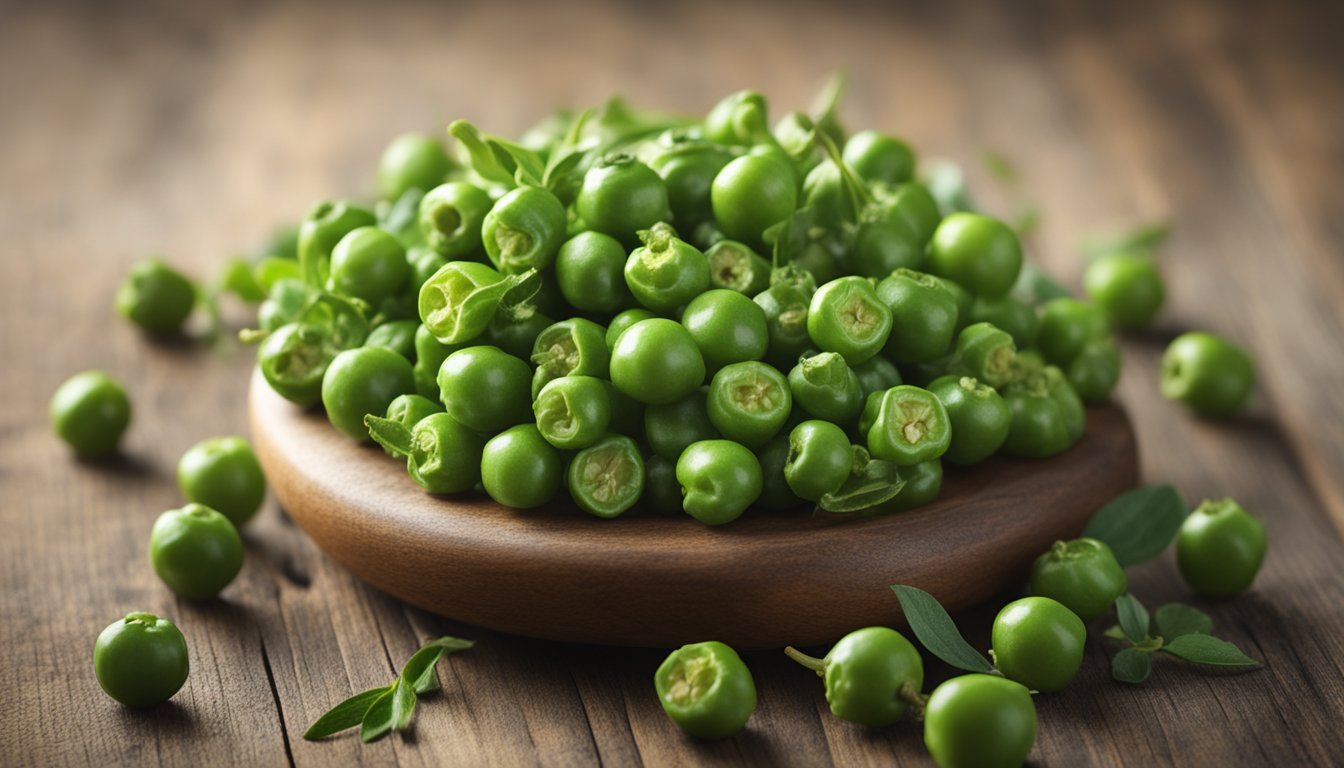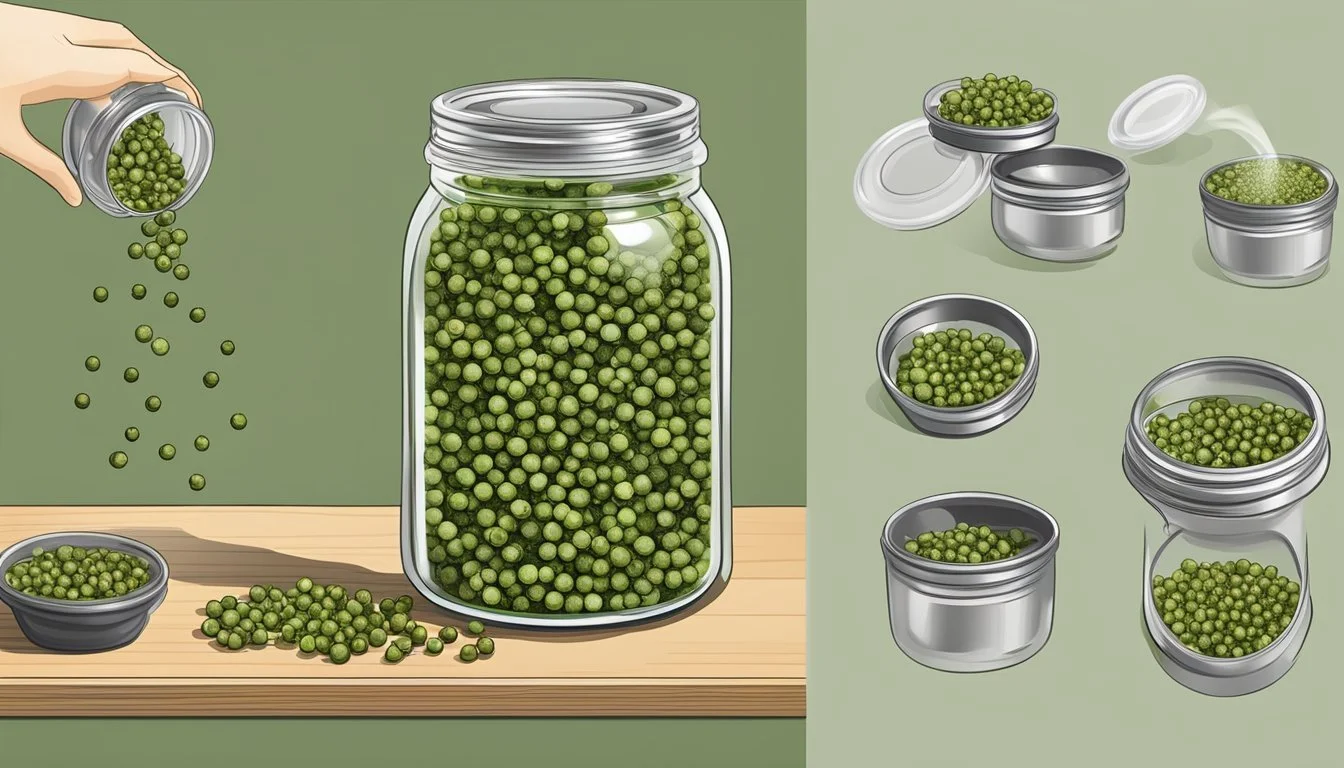Does Green Peppercorns Go Bad?
Shelf Life and Storage Tips
Green peppercorns are a unique spice often used in various cuisines for their bright, grassy flavor. Unlike their more mature counterparts, black peppercorns, they are the unripe berries of the pepper plant and possess a delicate taste. Yes, green peppercorns can go bad if not stored properly.
To retain their quality, green peppercorns should be stored in a cool, dry place away from direct sunlight. Proper storage can maintain their flavor and potency for up to one year. Their less mature state compared to black peppercorns means they're more susceptible to degradation, but with the right conditions, they can add a distinctive touch to your dishes for months.
In addition to culinary uses, green peppercorns have a long history of being prized in various cuisines. Their vibrant taste enhances the flavor profile of numerous recipes, making them a versatile spice in the kitchen. Keeping them in optimal storage conditions ensures that this valuable ingredient remains fresh and flavorful over time.
Understanding Peppercorns
Peppercorns come from the Piper nigrum plant and vary in color and flavor based on their maturation stage. This section highlights the principal types of peppercorns, the plant they come from, and how their color changes as they mature.
Types of Peppercorns
Peppercorns are primarily classified into black, white, green, and red varieties.
Black peppercorns are harvested when the berries are almost ripe and then dried.
White peppercorns come from fully ripened berries with the outer skin removed.
Green peppercorns are picked while unripe and either air-dried or preserved in brine or vinegar.
Red peppercorns are fully ripe berries that are dried or brined, retaining their red hue.
Each variety offers a unique flavor profile and culinary use. Black peppercorns are prevalent for their robust flavor. White peppercorns are milder and used mainly in light-colored dishes.
The Piper Nigrum Plant
The Piper nigrum plant, also known as the pepper plant, is a flowering vine cultivated for its fruit, known as peppercorns. Native to South India, it thrives in tropical climates and requires well-draining soil.
The plant produces long spikes of small flowers, which develop into clusters of pepper berries. These berries are harvested at different ripening stages, influencing their color and flavor. The plant's ability to produce various types of peppercorns makes it versatile for different culinary traditions.
Color and Maturation
The color of peppercorns changes as they mature, affecting their flavor and use.
Green peppercorns are unripe and known for their fresh, mild taste.
Black peppercorns turn black due to enzymatic browning and drying, providing a strong and pungent flavor.
White peppercorns are fully mature berries with the outer skin removed, yielding a subtler taste.
Red peppercorns are fully ripe and either dried or preserved, offering a unique sweetness.
These color shifts are crucial for their specific culinary applications. Green peppercorns are often used in sauces and garnishes, whereas black peppercorns are typically ground for seasoning. White peppercorns are popular in light-colored dishes to maintain visual appeal.
Green Peppercorn Basics
Green peppercorns are youthful, milder counterparts to black peppercorns, known for their unique flavor and potential health benefits. They are versatile in culinary applications, enhancing a variety of dishes from meats to salads.
Flavor Profile
Green peppercorns boast a milder flavor compared to black and white varieties. They are notable for their fruity notes and subtle heat, making them a less overpowering option. Their complex flavor includes hints of juniper, pine, resin, and camphor.
This milder profile makes green peppercorns ideal for dishes where the spicy kick of black pepper would be too intense. They pair well with fish, seafood, poultry, and can enhance the flavors in sauces, soups, and salads.
Health Benefits
Green peppercorns, similar to other peppercorn varieties, offer several health benefits. They contain antioxidants that help combat oxidative stress in the body. Additionally, they have anti-inflammatory properties that may support overall health.
These peppercorns may also aid digestion by stimulating the production of digestive enzymes. Other potential benefits include improved gut health and enhanced flavor balance in healthy recipes, making dishes like grilled fish, soups, and salads both enjoyable and beneficial.
Storing Green Peppercorns
Proper storage is crucial for maintaining the quality and extending the shelf life of green peppercorns. Careful attention to conditions such as temperature, moisture, and exposure to light can ensure that green peppercorns remain fresh and flavorful for as long as possible.
Proper Storage Conditions
Green peppercorns should be stored in a cool, dry place. They are less mature than black peppercorns, making them more delicate. An airtight container, such as a glass jar with a tight lid, is ideal for keeping moisture and air out.
Avoid placing the container near heat sources or in direct sunlight. Heat and light can accelerate the degradation process, leading to a loss of quality and flavor.
Shelf Life Considerations
When stored correctly, green peppercorns can retain their quality for up to one year. Unlike whole black peppercorns, green peppercorns have a shorter shelf life due to their higher moisture content. It's important to check them periodically for any changes.
Keeping green peppercorns in optimal conditions can potentially extend their usable life. However, always assess their condition before use, especially if they've been stored for an extended period.
Signs of Degradation
Monitoring green peppercorns for signs of degradation is essential. Indicators that green peppercorns are no longer good to use include a dull or faded color, a loss of the fresh peppery aroma, or a rancid smell.
Additionally, if the peppercorns appear moist or clumped together, it may indicate exposure to humidity or moisture, which can lead to spoilage. If any of these signs are present, it is best to discard the peppercorns and get a fresh supply.
Green Peppercorns and Freshness
Maintaining the freshness of green peppercorns involves understanding how to preserve their potency and the conditions they require for optimal storage.
Maximizing Potency
Green peppercorns, when fresh, have a vibrant green color and a distinct, potent flavor.
To keep their potency, they should be stored in a sealed container to prevent exposure to air, which can degrade their quality.
Fresh peppercorns are best used within a few weeks to maintain their intense flavor. They can also be dried, but this reduces their taste over time.
Freezing is a viable option for long-term storage. When frozen, green peppercorns retain their potency longer.
Opt for freezing in small batches to reduce thawing and refreezing, which can compromise their quality.
Optimal Conditions for Preservation
The ideal conditions for storing green peppercorns involve a combination of cool, dark, and dry environments.
A refrigerator is suitable for short-term storage, especially if kept in an airtight container. For longer preservation, a freezer works best.
When freezing, ensure that green peppercorns are in sealed containers to prevent moisture buildup and freezer burn.
Avoid storing them in places exposed to light or heat, as these factors significantly reduce their shelf life and potency.
Following these guidelines will ensure that green peppercorns remain as fresh and flavorful as possible.
Handling and Usage Tips
Green peppercorns add a unique, vibrant flavor to dishes, offering a fresher, more subtle heat compared to black peppercorns. Proper handling and preparation ensure you get the most out of their distinct taste.
Grinding Techniques
Green peppercorns can be ground similarly to other types of pepper, but it's essential to consider their moisture content.
Using a mortar and pestle provides control over the coarseness, ideal for releasing the peppercorns' delicate aromas. An electric spice grinder also works well but may create finer grounds quickly.
Before grinding, toasting the peppercorns briefly can enhance their flavor profile. Be cautious not to burn them. Once ground, use immediately to retain maximum flavor, as ground peppercorns lose potency faster than whole ones.
Cooking with Green Peppercorns
Green peppercorns are versatile and can be used whole or ground in various recipes.
They shine in dishes like meats and stews, adding a nuanced heat that complements rich flavors. Using them in salad dressings can provide a mild, peppery bite without overpowering the other ingredients.
When cooking, green peppercorns can be added early in the process to infuse the dish. Alternatively, they can be incorporated towards the end to preserve their flavor profile. Crushing them slightly before adding to a dish can release more aroma and taste.
Alternatives for Expired Peppercorns
If green peppercorns lose their zest or spoil, consider alternatives to maintain the flavor of your dishes.
Black peppercorns are a common substitute, offering a bolder heat. Adjust the quantity used to balance the dishes, as black peppercorns have a stronger flavor.
Other options include white peppercorns for a milder taste or pink peppercorns for a sweet and floral note. Each alternative provides a unique twist while still contributing the needed peppery background.
Replace expired peppercorns promptly to ensure the best culinary outcome in your cooking endeavors.
Global Impact of Green Peppercorns
Green peppercorns play a significant role in various cuisines around the world and are cultivated in several key regions. This section explores how different cultures incorporate this spice and highlights major producing areas.
Green Peppercorns in Different Cultures
Green peppercorns are notable for their distinctive, milder flavor, which is valued in many culinary traditions. In French cuisine, green peppercorns are often used in classic sauces, such as the creamy green peppercorn sauce served with steak.
In Thai cooking, they are a crucial ingredient in various spicy dishes, providing a unique flavor that complements the heat of chili peppers. Similarly, Indian cuisine incorporates green peppercorns in various curries and pickles, leveraging their subtle heat and complex taste to enhance dishes.
These peppercorns are appreciated for their ability to aid digestion and their rich antioxidant properties, making them a choice ingredient in health-conscious recipes as well.
Major Producing Regions
The cultivation of green peppercorns is concentrated in specific areas known for their favorable growing conditions. India is one of the leading producers, especially in regions like Kerala, where the climate is ideal for the growth of the vine that bears these fruits. The peppercorns flourish in the humid, tropical environment.
Thailand is another significant producer, where the spice not only thrives but also holds cultural importance. In addition, Brazil has emerged as a notable supplier, with a growing industry focused on meeting global demand.
These regions contribute to a steady supply of green peppercorns, ensuring they remain a vital component in global cuisine.
Identifying and Addressing Spoilage
Green peppercorns, like other spices, have specific indicators of spoilage. Addressing these signs promptly can help maintain their quality and shelf life.
What Does Bad Look Like?
Spoiled green peppercorns present several visible and tactile signs. Mold is a clear indicator. Look for any fuzzy or discolored patches, which indicate fungal growth.
Color changes can also signal spoilage. Fresh green peppercorns maintain a vibrant green hue, while bad ones may appear dull or brownish.
Texture plays a crucial role. Peppercorns that feel soft or squishy instead of firm are likely bad. Assess their feel by lightly squeezing a few.
Aroma differences are also telling. Fresh peppercorns have a robust scent, whereas spoiled ones may smell rancid or bland. Smelling them can confirm their condition.
Preventive Measures Against Spoilage
Proper storage is essential for preventing spoilage. Keep green peppercorns in a cool, dry place. Avoid areas with high humidity or direct sunlight exposure, as this can accelerate deterioration.
Using airtight containers, such as jars or vacuum-sealed bags, can significantly extend their life. This prevents moisture and air from degrading the peppercorns' quality.
For bulk storage, consider dividing the peppercorns into smaller portions. This reduces the frequency of exposing the entire batch to air and humidity during use.
Keeping the spices in a designated spice drawer or cupboard can help maintain optimal conditions. Regularly check the stock for signs of spoilage and promptly discard any bad peppercorns to prevent contamination of the remaining batch.








